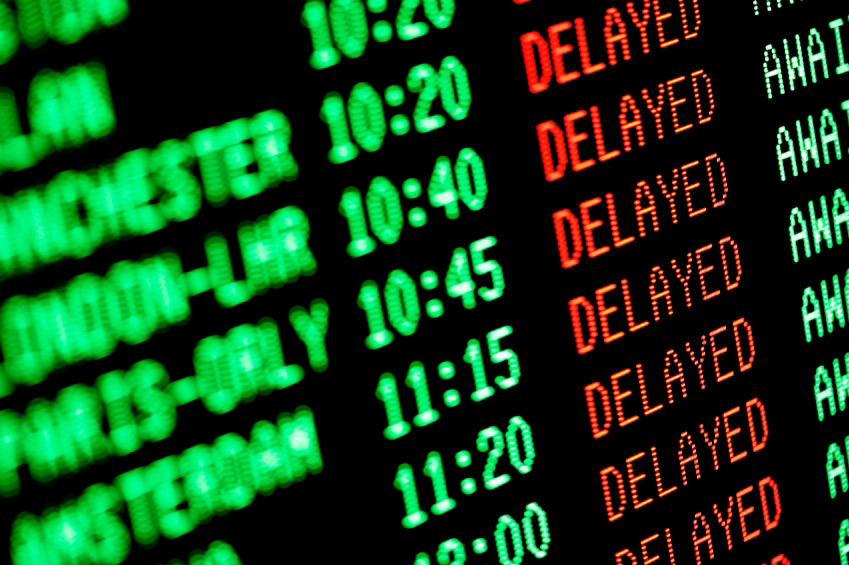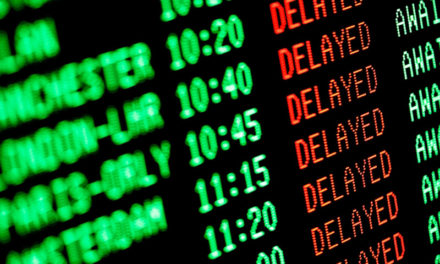Does New Fine Simply Create a Hidden Tax on Travel?
The three hour tarmac delay rule for U.S. airlines goes into effect April 29, but business travelers and other airline passengers should expect continued delays – sometimes long delays – for one in five flights.
It felt like a present to business travelers during Christmas week when the U.S. Department of Transportation (DOT) announced that airlines would be fined up to US$27,500 per passenger if U.S. domestic flights do not return to the gate before three hours of tarmac delays.
The DOT rule points responsibility for tarmac delays directly at airlines, indicating they must also anticipate passenger comforts during delays, but the DOT didn’t offer any direction to actually solve the problem.
This made me wonder: Was the three hour tarmac delay rule established in the best interest of travelers?
Scope of the Tarmac Delay Problem
It’s important to realize that 64,393 domestic flights experienced tarmac delays in excess of one hour in 2009. Only 1.5% of these flights were delayed in excess of three hours, according to data from the U.S. Bureau of Transportation Statistics (BTS).
An airline fine for only a small portion of flights isn’t likely to solve the issue of tarmac delays. What’s worse is that the Federal Aviation Administration (FAA) and even the municipal airports contribute to the majority of delays, and the tarmac delay rule fails to address these. Of course, why would the DOT penalize government entities?
Airline consumer activist Kate Hanni, founder of flyersrights.org, suggests that airlines could play their part to reduce delays by scheduling flights between 6 a.m. and 9 a.m., and 3 p.m. and 5 p.m. to levels that they can actually accommodate while increasing the number of flights during other times.
Hanni recommends that the FAA should “refuse to allow planes to back away from a gate unless they have a hard departure of 30 minutes.” She says that the FAA must also purchase a sufficient number of airport buses to move people from the tarmac to the terminal at airports which is common outside the U.S. in Europe and elsewhere.
The one solution that many agree would have the greatest impact is a major upgrade to the air traffic control system, but nobody knows when that will be approved and implemented.
U.S. Treasury Receives Airline Tarmac Delay Fines
Because passengers are the ones who actually endure the inconvenience of tarmac delays, it seems that they should be at the center of every delay discussion, including penalties. However, the DOT rule is noticeably absent of any form of passenger compensation.
This begs the question: Will airline fines for tarmac delays benefit the inconvenienced passengers in any way? If the money goes specifically to related FAA projects, then yes. However, that’s not in the plan.
Fines go to the U.S. Treasury and aren’t dedicated to any specific purpose, says DOT spokesman Bill Mosley.
That’s right. The tarmac rule is essentially a hidden tax that will ultimately be levied upon travelers because airlines will need to cover that penalty through the price of tickets and services.
Most airlines oppose the rule and warn that it may force them to cancel many flights to avoid the fines. So it seems the new rule may have backed them into a no-win situation with their customers.
Worst U.S. Airports for Tarmac Delays
If asked, many business travelers would agree that allowing three hours for tarmac delays is too lenient on the airlines, airports and other agencies that contribute to the problem.
After all, this more than doubles the originally planned travel times in most cases. About 73% of all flights are scheduled within a flight block of two hours or less, according to an analysis of flights at 30 of the largest U.S. airports last fall by OAG, Washington, DC. And it doesn’t help that roughly 20 to 25% of domestic flights never arrive on time.
In 2009, more than 58,000 flights were delayed 1-2 hours, and more than 5,400 flights were delayed 2-3 hours. 903 flights were delayed more than three hours, according to data from BTS.
There is a recognizable pattern as to where tarmac delays happen. Roughly 60% of all tarmac delays occur at one of 12 airports. The top five include:
- New York’s Kennedy International (9,829)
- Newark Liberty International (4,358)
- Atlanta’s Hartsfield-Jackson (4,071)
- Chicago’s O’Hare International (3,871)
- Philadelphia International (3,627)
Given this, it will be interesting to track what fines the DOT will assign, and if airlines can make favorable changes.
But the ruling fails to recognize that tens of thousands of flights will continue to experience serious and unwelcome delays.
My advice: Charge your cell phone, bring extra batteries, and buy water and snacks before boarding the plane. You may be sitting for a while.




